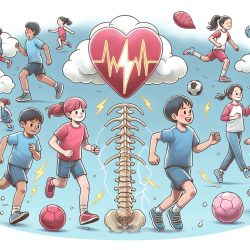The world of speech and language therapy is constantly evolving, with new research shedding light on innovative techniques that can significantly improve patient outcomes. One such technique is transcranial direct current stimulation (tDCS), a non-invasive method that has shown promise in enhancing language therapy for individuals with primary progressive aphasia (PPA).
Understanding tDCS and Its Impact on PPA
Transcranial direct current stimulation involves applying a low electrical current to specific areas of the brain. In the context of PPA, recent research has focused on the left inferior frontal gyrus (IFG), a critical area for language processing. The study titled "The effect of tDCS on functional connectivity in primary progressive aphasia" published in NeuroImage: Clinical, volume 19 (2018), pages 703–715, provides compelling evidence of tDCS's potential benefits.
Key Findings from Recent Research
- Functional Connectivity Changes: The study found that tDCS led to significant changes in functional connectivity between the stimulated area and other parts of the language network. This suggests that tDCS may help rewire the brain's language pathways, potentially leading to improved language outcomes.
- Improved Language Scores: Participants who received tDCS showed notable improvements in language scores compared to those who underwent sham treatments. This improvement was measured through letter accuracy in written naming tasks.
- Mechanism of Action: The research suggests that one mechanism by which tDCS enhances language function is by decreasing functional connectivity between the stimulated site and other posterior areas of the language network.
Implications for Practitioners
The findings from this study offer exciting opportunities for speech-language pathologists and therapists working with PPA patients. By incorporating tDCS into traditional language therapy sessions, practitioners can potentially enhance treatment efficacy and provide better outcomes for their clients.
Moreover, understanding the mechanisms behind tDCS's effects can guide future research and clinical trials, paving the way for more targeted therapies that address specific neural pathways affected by neurodegenerative conditions like PPA.
Encouraging Further Research
The promising results from this study highlight the need for continued exploration into tDCS and its applications in speech-language therapy. Practitioners are encouraged to stay informed about ongoing research developments and consider participating in clinical trials that investigate new therapeutic modalities.
For those interested in delving deeper into the original research findings, you can access the full paper here: The effect of tDCS on functional connectivity in primary progressive aphasia.










